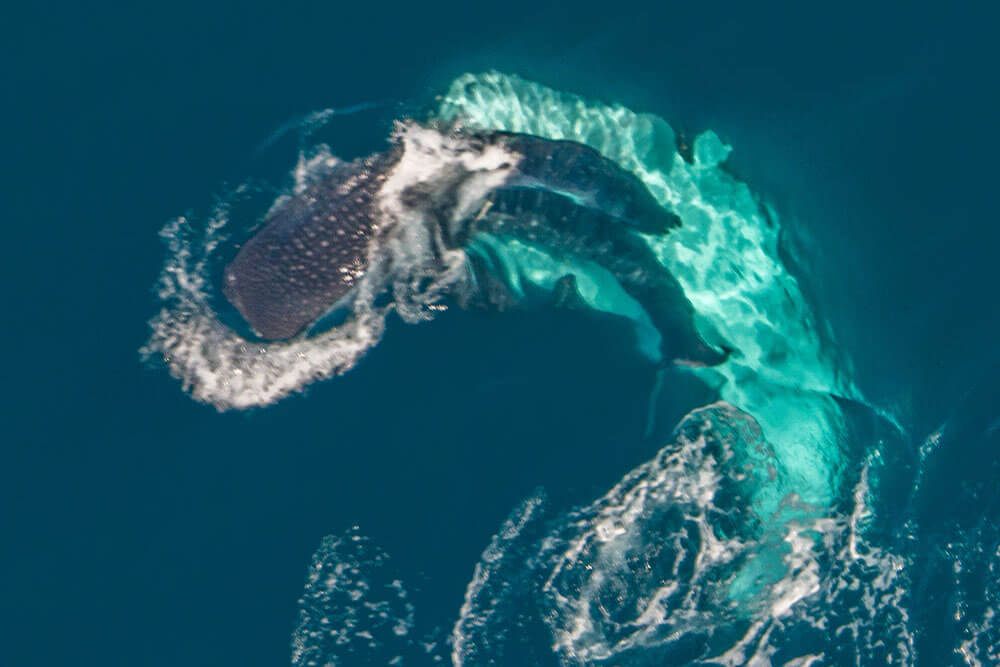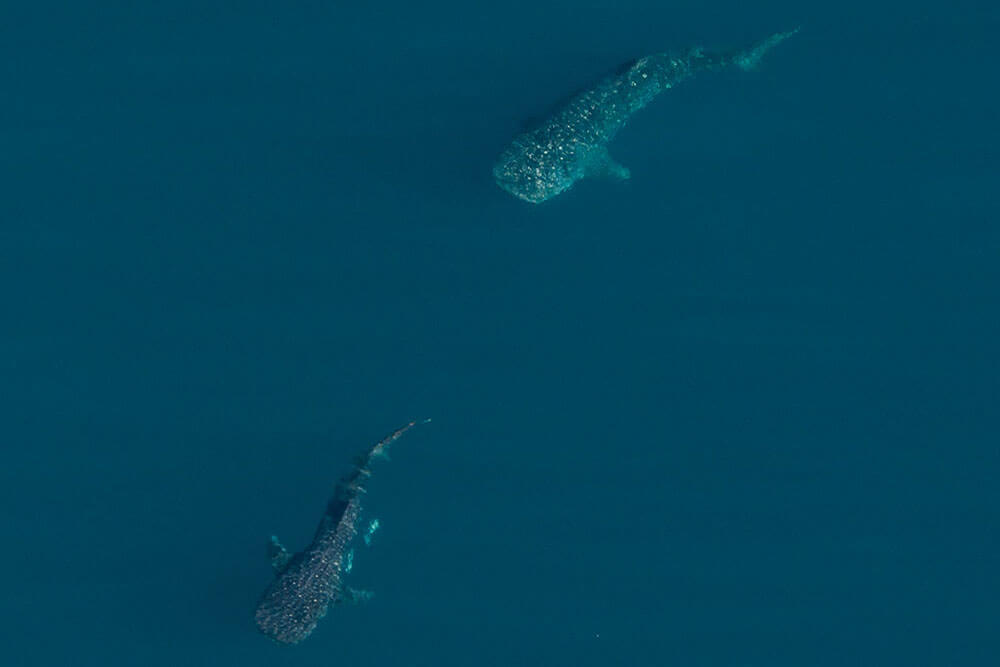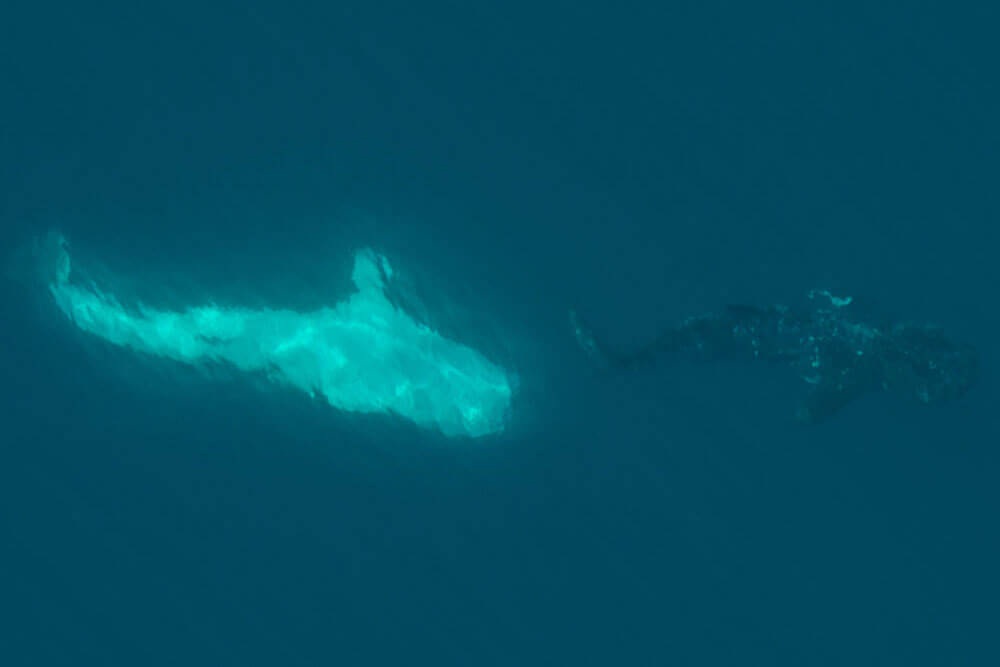
Whale shark mating behaviour has been photographed for the first time at Ningaloo Reef, off the coast of Western Australia.
The incredibly rare event was captured by Tiffany Klein, a spotter pilot for Ningaloo Aviation, who helps tour operators and researchers from CSIRO (Commonwealth Scientific and Industrial Research Organisation) to locate and identify whale sharks and other large animals, such as humpback whales.
Every year between March and August, whale sharks gather at Ningaloo Reef, a 260km long stretch of fringing coral reef along Australia’s northwestern coast. It is estimated that up to 500 individuals, most of which are juvenile males, gather to feed on the rich blooms of plankton that occur during this time of year..

Prior to the incident, Ms Klein, who has been flying for nine years and who has more than 3,500 hours above Ningaloo Reef, had been keeping track of a large whale shark that local tour operators had been swimming with.
‘I had been watching the shark for the previous couple of hours,’ said Ms Klein in an e-mail to DIVE. ‘The shark was moving quite erratically which is unusual for whale sharks, and I was giving the boats assistance to stay with it.’
‘After they left, I was directing the CSIRO boat to go and have a look at it and the shark approached another smaller female shark.’ said Ms Klein, ‘I watched as the larger male shark caught up to the smaller shark and then immediately turned upside down underneath it and the mating attempt followed.’


‘The interaction lasted only a couple of minutes before both sharks dived down quite quickly,’ added Ms Klein. ‘I stayed overhead and a few minutes later the larger shark resurfaced, but seemed a lot more “chilled out” and was swimming slowly on the surface. The smaller shark did not resurface.’
After the interaction was over, Ms Klein directed Dr Richard Pillens of CSIRO, who was also in the area, to the male shark’s location. The shark was subsequently identified as a 9m-long adult male nicknamed ‘Chummy’, which has been previously recorded several times at Ningaloo Reef. Although the smaller shark was not observed closely enough to see if it had previously been identified, the animal was thought to be a juvenile female, estimated at between 5-6m in length.

Ninglaoo Reef is the longest fringing reef in Australia (Picture: Google Maps)
‘It’s actually the first time we’ve seen it anywhere in the world,’ said Dr Pillans, in an interview with ABC news. ‘As you can see from the aerial images he was completely upside down, his claspers or his male reproductive organs are flared and he’s attempting to mate with this female.’
It appears that the mating attempt was, however, unsuccessful. Dr Pillans noted that the difference in maturity between the sharks is likely to be the reason that the mature male whale shark’s mating attempt was ‘brushed aside’ by the female shark.


Whale sharks are currently considered to be endangered according to the IUCN Red List. Although they are regularly spotted in certain locations, almost nothing is known of their behaviour, especially their mating habits. There are several known aggregations of whale sharks around the world, such as in Djibouti, Belize and Yucatan. As with Ningaloo, however, these gatherings seem to be dominated by juvenile males, and appear to be primarily for feeding.
It is known that pregnant females gather around the Galápagos Islands, and it was recently discovered that the remote South Atlantic island of St Helena is host to an annual congregation of whale sharks that sees adult males and females gather in almost equal numbers. St Helena is the only known location in the world where such a gathering takes place, and thought to be a meeting point for adult whale sharks to find a partner. Where they actually mate, however, and where they give birth, remains unknown.
‘The fact that the behaviour is taking place [at Ninglaoo Reef] is extremely important,’ said Dr Pillans. ‘It’s an incredibly rare event to see. The fact that the males are actively trying to engage in mating behaviour, suggesting that Ningaloo may be an area where mating occurs, is very exciting and certainly something that warrants further research.’
With thanks to Tiffany Klein for sharing her photographs, and to Suzanne Fisher of Australia’s Coral Coast for alerting us to the sighting.


